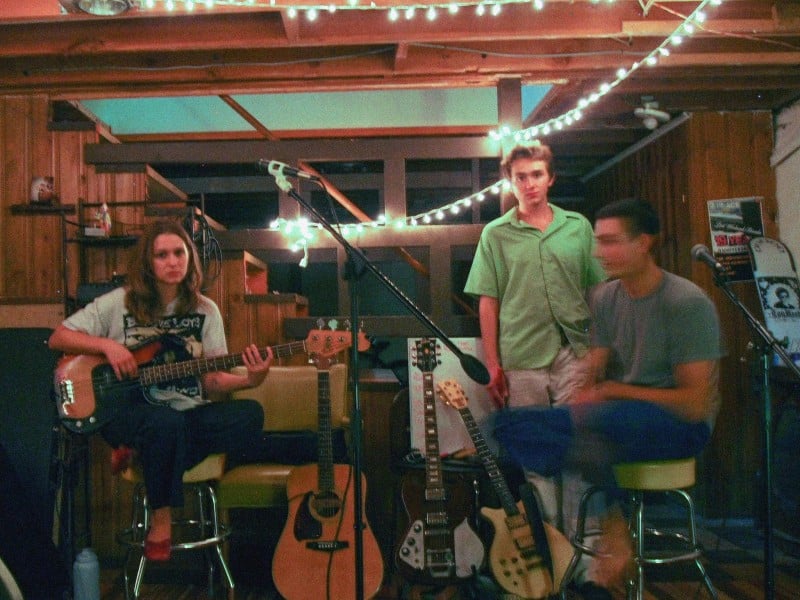
Recording engineer Joey Gurwin first heard the unbelievable story of Franz “Tihany” Czeisler in the fall of 2022, when out of the blue he received a call from the late Czeisler’s granddaughter, Catherine, who hoped to create a podcast about her experiences growing up in the circus. But as the conversation unfolded and Gurwin started to learn more about Czeisler – a Jewish Hungarian illusionist who escaped to South America amid the Holocaust and launched Circus Tihany, named after a town in Hungary – he began to realize that this was the story that needed to be told.
“I grew up in a Jewish community, a Jewish household, and I think the stories of survival from the Holocaust and the Shoah are important, especially as we get further away from it,” said Gurwin, owner of Oranjudio recording studio. “It seems to be something that goes to the back burner. It’s black and white photos. And there are fewer and fewer survivors around who can recount their memories. And so, it’s important to record these things. And I think initially I saw myself as another potential witness to help bring the story to light.”
With Catherine’s blessing, Gurwin started into a lengthy research process, which deepened his appreciation for the story’s magical elements – Czeisler, by all accounts, was a world-class illusionist – but also the level of self-determination at play. In numerous other tales of Holocaust survival, Gurwin said, the Jewish protagonist is saved by “a righteous gentile” motivated by a sense of moral duty (see: “Schindler’s List”). “It’s a well-worn story, and I understand why it’s so compelling,” he continued. “But what drew me to this story was that the hero was Franz himself. … And then the way that illusion became such a human element, where it wasn’t this turning coffee into streamers type of thing. Instead, it was Franz convincing marauding Soviet occupying soldiers that they shouldn’t go into his house. Or convincing the German Red Cross that he should be performing in front of wounded Hungarian and Nazi soldiers. And it just became micro-illusion after micro-illusion.”
Within the podcast, Gurwin and Co. refrain from casting Czeisler in an idealized light, digging into the emotional distance he kept even from family members in presenting him as a flawed but ultimately valiant character. “It’s being able to show the full three dimensions of him as a human,” said Gurwin, who plans to release the first episode of “Tihany’s Illusion: The Search for Franz Czeisler” on Saturday, June 29 (the full season consists of seven episodes). “In general, Franz had to become ‘The Great Tihany’ to survive. And I think that’s something we can all understand, in some way. We all have that mask we put on to make our way through the world. But maybe there are situations where we can’t take it off. Did Franz really survive this war? Or did he just come out of it as Tihany? And the family, they never got Franz back. Catherine never got her grandfather back.”
Throughout, the research presented numerous hurdles, many created by Czeisler himself, who in forging a new identity necessarily cut ties with his past.
“When you’re researching someone who is purposely obfuscating the situation for their survival, and you’re finding documented evidence of lies and fraud, it can be really tough,” Gurwin said. “You have Franz purposely obfuscating his own life. And you also have the Nazi perpetrators purposely obfuscating their own crimes. So, you have this conspiracy of silence coming from all sides. … And in that, you find yourself reading the gray areas of history, if that makes sense. I can find his brother’s address in Romania. And I see that he lived in an assigned yellow star house. … And I see that Franz’s address is not a yellow star address. And so, you start to put pieces together based on what you don’t see. You don’t see Franz registering for forced labor. You don’t see Franz moving with the Jewish population the way he was required to based on the laws during World War II. And it becomes this puzzle you have to gradually put together.”
While Gurwin has some experience in recording podcasts, including some basic edit and production work on a weekly Ohio State Buckeyes football podcast, he had never been part of an undertaking of this magnitude. The research alone stretched over more than 18 months and included interviews with Czeisler’s family members, including Catherine and Czeisler’s son, Ludwig. There were also multiple research trips, which sent Gurwin and co-writer Sarah Hume to places such as Washington, D.C., where he logged time in the archives at the United States Memorial Holocaust Museum, as well as the John and Mable Ringling Museum of Art in Sarasota, Florida.
Additionally, Gurwin spent hours on the phone with various officials, procuring with the help of researcher Dr. Dallas Michelbacher all of the paperwork related to Czeisler’s brother, Bela, who died at the Buchenwald concentration camp during the Holocaust. And Gurwin said being able to provide the Czeisler family with documented evidence of Bela’s death – long rumored but never proven – stands among the most emotional experiences he had in producing the series.
“Even Ludwig, who met Bela when he was young, all he knew was that he had an uncle who got deported during the Holocaust and never came back,” Gurwin said. “So, it was this really powerful moment to be able to bring to the family [paperwork] that said, ‘This is where he was. This is the day he died.’ Ludwig, who’s in his 80s at this point, I watched him cry and kiss the name of Bela on this Nazi paperwork.”
A second research discovery inspired a comparative chill in Gurwin, when he was handed the paperwork in which Nazi officials first proposed the deportation of Jews from Romania. “I just remember this sinking feeling in my stomach holding what amounted to … some mid-level bureaucratic release that ultimately sentenced tens of thousands of people to the gas chambers,” said Gurwin, who was struck by the detached, clinical nature of the document. “I’m just holding this death sentence for entire cities of people that some guy just rubber stamped. And I think that’s the moment where the importance of this story really hit me, and where I really felt the need to honor it in the way it needs to be honored.”



